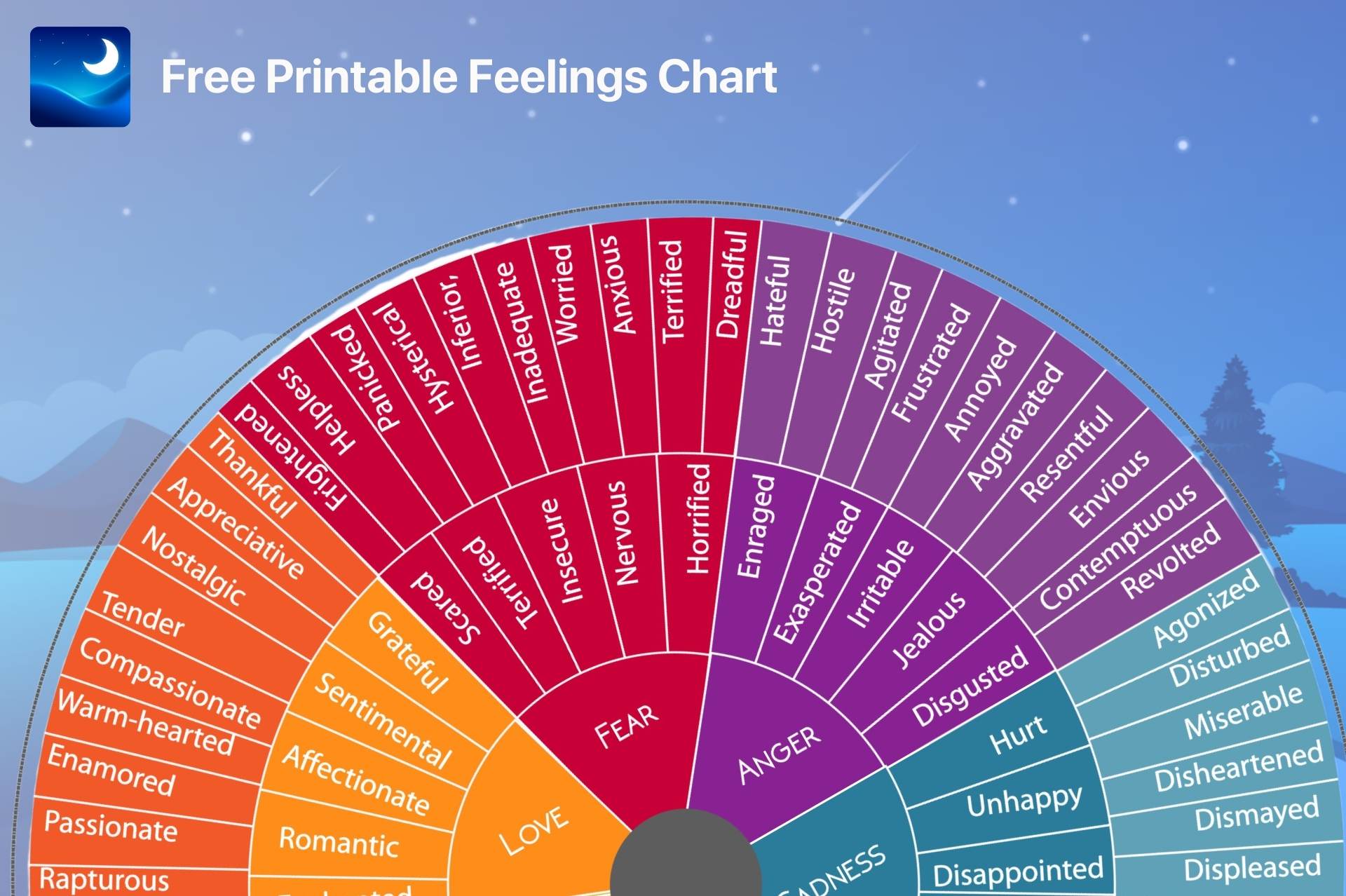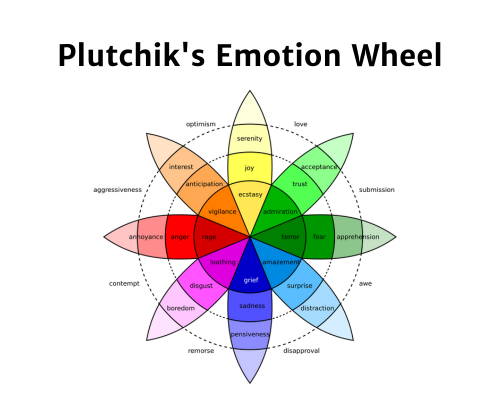


“I’m fine”, “I’m okay”.
These are the words that you would commonly hear whenever you ask someone how they are and how are they doing. Perhaps, you might even be that person who says these exact words.
However, feeling fine or feeling okay is not actually a feeling or an emotion. Feeling angry, happy, or sad is. Maybe the reason why we say these words instinctively is because we lack the emotional vocabulary to identify how we are truly feeling. This is where a feeling wheel can help us to pinpoint those emotions.
The feeling wheel is a powerful tool that is designed to help people to recognize their feelings and to communicate them better.

The idea of a feeling wheel was first developed by American Psychologist, Robert Plutchik in 1980. He called it the ‘Wheel of Emotions’. In this wheel, it consists of eight primary emotions–– joy, sadness, anger, disgust, surprise, fear, trust, and anticipation. Plutchik believed that these emotions set the foundation for other emotions that an individual experiences.
In 1982, Gloria Willcox created a similar concept, known as the ‘Feeling Wheel’. Unlike Plutchik, Willcox’s version presents six primary emotions on opposite sides of the wheel. The wheel is balanced between comfortable and uncomfortable emotions.
Sad, mad, and scared are the negative or uncomfortable emotions presented on one side of the wheel. Peaceful, powerful, and joyful are the positive or comfortable emotions presented on the other side of the wheel.
There are up to 72 possible feelings that you feel, indicated on the feeling wheel. Each primary emotion has 12 feelings that are categorized under them.
The feeling wheel consists of concentric circles. In the center, it is where the basic emotions or the core feelings lie. Just outside of the central circle, is the secondary circle. Here is where the secondary feelings lie. Lastly, the tertiary circle is where the tertiary feelings lie.
The secondary emotions and tertiary emotions are much more accurate identifiers of your feelings in comparison to the circle of core emotions.
Being able to understand and express our feelings is a crucial aspect of exploring life’s complexities. Being able to identify your own as well as the feelings of others is a skill which relates to emotional intelligence.
With a visual representation of the different kinds of feelings that exists, individuals can simply use the wheel to precisely identify and pinpoint their feelings. Through this, individuals gain a heightened awareness of their emotions, encouraging them to explore the experiences that arises those emotions.
This emotional awareness becomes a stepping stone towards developing emotional intelligence.
Rather than using a vague expression which is neither honest nor accurate to communicate one’s feelings, the feeling wheel can help to improve that. The emotional vocabulary and visual framework can help to connect the dots for some.
Especially in interpersonal connections, it can get challenging to express what you are feeling about a particular situation. After all, feelings are complex. You may not be experiencing just one emotion but a range of emotions at any given point in time.
The feeling wheel encourages self-reflection by encouraging individuals to pause and take the time to re-examine their emotions throughout the day or week.
With the feelings wheel, individuals can communicate better with other individuals about their feelings more precisely. This will foster empathy as individuals with mutual feelings are able to comprehend and relate to one another. They will also have more clarity as to what their peers are going through.
Being able to sense what others are feelings as well as your own feelings is a good indicator of having emotional intelligence. Identifying your feelings and understanding why you feel that way (e.g. feeling anger towards animal abusers, etc.) equips you with the ability to tackle that challenge and form an action plan. Thus, developing problem-solving skills.
The wheel encourages individuals to navigate their emotions in a healthy manner. Giving a name to your emotions can empower you to see it and decide what to do with a situation. This will prevent a snowball effect, promoting better mental health.
Whether you are looking to increase your communication skills, have better emotional awareness or promote mental well-being, the feeling wheel provides a good approach in doing so.
To start off, you will need to have a copy of the feeling wheel. You can retrieve this by searching online for a feeling wheel template and saving a copy. To save you time and trouble, you can also download ShutEye’s Feeling Wheel PDF here instead.

Once you have your copy ready, let’s proceed with the first step!
Take a look at the feeling wheel template that you have just downloaded or saved. You will notice that there are three concentric circles in the wheel. Focus on the centre where you will see six emotions that are either positive or negative.
Think about what you are feeling at the moment and choose the emotion that resonates best with it.
Once you have identified the core emotion that you are feeling, you then want to go on and identify the exact word to describe that specific emotion. After all, the six emotions are not a one-size-fits-all.
Outside the centre, is the secondary and tertiary circle. This is where you will find a wider range of emotions that are associated with the core emotions.
This time, observe what you are currently feeling and choose the emotion that resonates best. The emotion chosen should reflect your feelings more accurately. Choosing the most accurate emotion to describe your current emotional status will help you to express better in conversations.
You may also want to take this time to consider what your triggers may be, based on the feeling words on the wheel and the colours that they are in. The darker shades indicates the intensity of the emotion. Hence, the darker the shade, the more intense the feeling is.
Once you have finished exploring the various emotions that are on the wheel, take some time to process your current emotions. Find a way to express them either through conversations, journalling, painting or some other creative outlet.
Being able to articulate your feelings is the first step to better self-awareness and mental well-being.
The main difference between the feeling wheel versus the emotion wheel is the structure. For Plutchik’s emotion wheel, it has eight core emotions whereas Willcox’s feeling wheel has six core emotions.
There are also a lot fewer words to describe a particular emotion in the emotion wheel compared to the feeling wheel.
Here’s an image of the emotion wheel for reference.

To sum up, the feeling wheel can be a great tool to help you discover yourself better and become more emotionally aware. Remember that while emotions are often complicated and multifaceted, taking steps to address it is also beneficial in the long term.
Plutchik, R. Emotions: A psychorevolutionary synthesis. Harper and Row. 1980.
Gloria Willcox (1982) The Feeling Wheel, Transactional Analysis Journal, 12:4, 274-276, DOI: 10.1177/036215378201200411
Zinker, J. Creative process in gestalt therapy. Vintage Books, Random House, 1978.